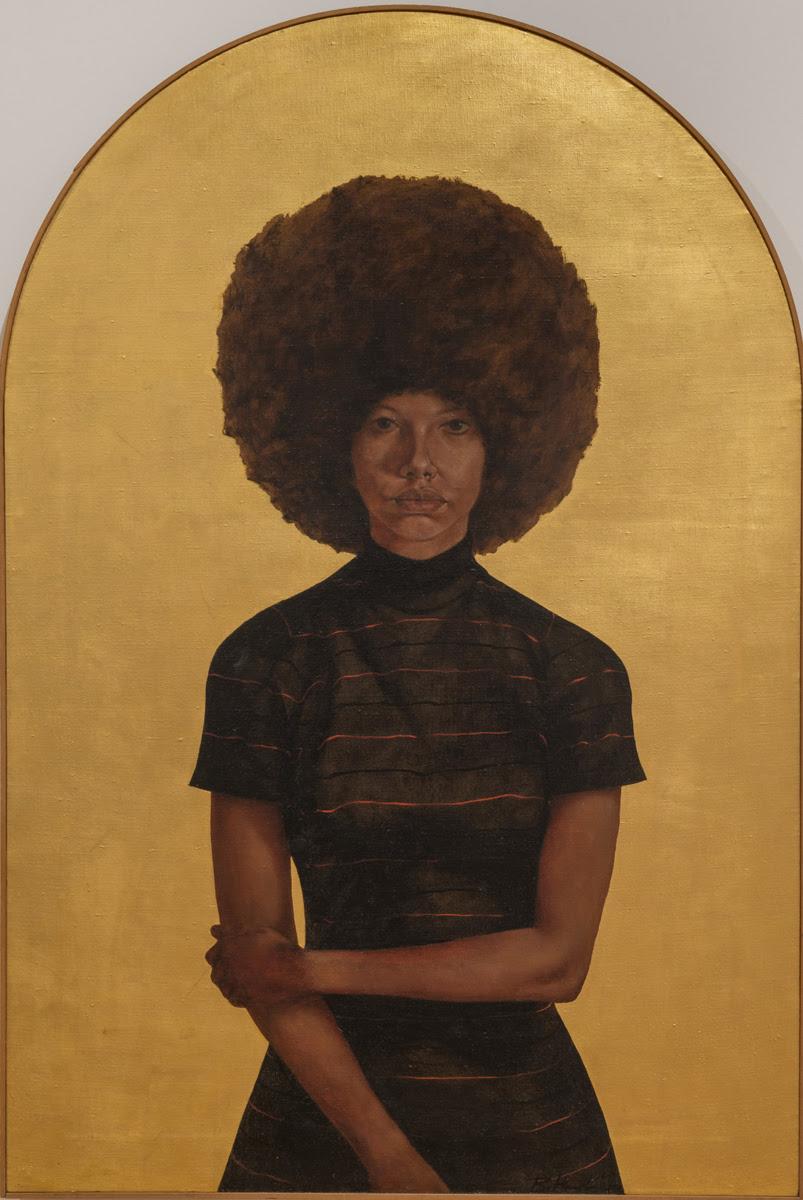Hendricks revolutionized contemporary portraiture with his vivid depictions of Black subjects derived from photographs of hired models or figures he encountered on the street. Beginning in the late 1960s, his work drew from and challenged traditions of European art, and The Frick Collection—with its iconic portraits by Rembrandt, Bronzino, Van Dyck, and others—was one of his favorite museums. Through a selection of some dozen of Hendricks’s finest portraits displayed in the context of the Frick’s holdings, the exhibition and its accompanying catalogue will consider the complex place of European painting in Hendricks’s art and how his work, in turn, continues to inspire major artists and designers today.
Comments Ng, “The Frick offers stirring encounters with figures painted centuries ago. As our temporary display at Frick Madison has shown, these works can look and engage visitors so differently outside of the Frick mansion, in the Brutalist setting of the Breuer building. Here, many of our visitors are new to the Frick, a revelation that has prompted reflection on who the Frick serves, has served, and will continue to serve. This project–the first major museum exhibition and catalogue to focus solely on Hendricks's early period of portraiture–allows us to consider connections the Frick has made with artists since it became a public museum in 1935. Hendricks’s astonishing portraits of predominantly Black figures, not represented in the Frick's historic paintings yet who, with their self-assured style, appear right at home among them, grants unprecedented opportunities to celebrate and explore the Frick's collection, Hendricks's groundbreaking innovations, and the bridges between them.”
Adds Sargent, “When Aimee and I first began speaking about the Frick and its place in today's world, I suggested an exhibition on Barkley L. Hendricks—obviously because of his interest in historic art as he developed his own style of portraiture of Black subjects, but also because the quality, dignity, and visual impact of his paintings are what I would think Henry Clay Frick might be drawn to if he were collecting now, thinking of future visitors to the museum in another hundred years. The catalogue accompanying the exhibition is an exciting way to highlight and reflect on Hendricks's own legacies, how he has inspired generations of artists and designers and still does today. Presenting Hendricks's art at a storied institution like the Frick pays due tribute to the historic significance of Barkley L. Hendricks, and it also honors the evolving role of the Frick in modern American culture."
About Barkley L. Hendricks:
Hendricks developed his signature style at a time of significant social and cultural change in the United States, especially with regard to Black artists, and amid a perceived binary between abstraction and representation. He produced portraits from the late 1960s through the early 1980s; following a hiatus during which he made landscapes, basketball paintings, works on paper, and photographs, he resumed his portraiture practice from 2002 until his death in 2017. This exhibition brings together some of the most innovative and striking examples from his first period of portrait painting, including a set of “limited-palette” canvases—featuring Black figures dressed in white against white backgrounds—a self-portrait, and boldly colorful works that spotlight their subjects’ spectacular styles and poses.
Following trips as a student to European museums in the 1960s, from which he returned “with a head full of inspirations,” he revisited those institutions (including the Frick) throughout his career. His reshaping of the conventions of portraiture grew in large part out of his study of Old Master painting, among the most prominent of his varied interests, which also included African and Indigenous art, fashion, and jazz music. His predominantly Black subjects are self-possessed and treated with individuality and reverence, celebrating Black identity that was so glaringly underrepresented in the canons of historic European art and of modern American art. At the same time, he was deeply committed to exploring abstraction and the eloquence of color and form in figurative painting.
A number of his elegant and often humorous portraits make direct reference to historical precedents. One of the earliest works in the show, Lawdy Mama (1969), for example, adapts the centuries-old technique of gold leafing in Christian paintings— exemplified by a group of early Italian Renaissance panels in the Frick’s collection—to a portrait of his cousin, wearing an Afro hairstyle (see page 1). Stylish and contemporary, Lawdy Mama also offers a meditation on archetypes of the feminine form and the enduring impact of European art and Christian culture in modern societies. In the limited-palette painting Steve (1976), meticulously painted reflections of arched windows in the subject’s sunglasses evoke Northern Renaissance artists like Jan van Eyck, whose paintings were so striking to Hendricks during his European travels and whose Virgin and Child with Saints and Jan Vos is among the most popular works in Frick Madison’s Northern European galleries. Each portrait in the exhibition highlights a distinct dimension of Hendricks’s practice, which, in taking inspiration from history, transformed figurative painting for future generations.






























